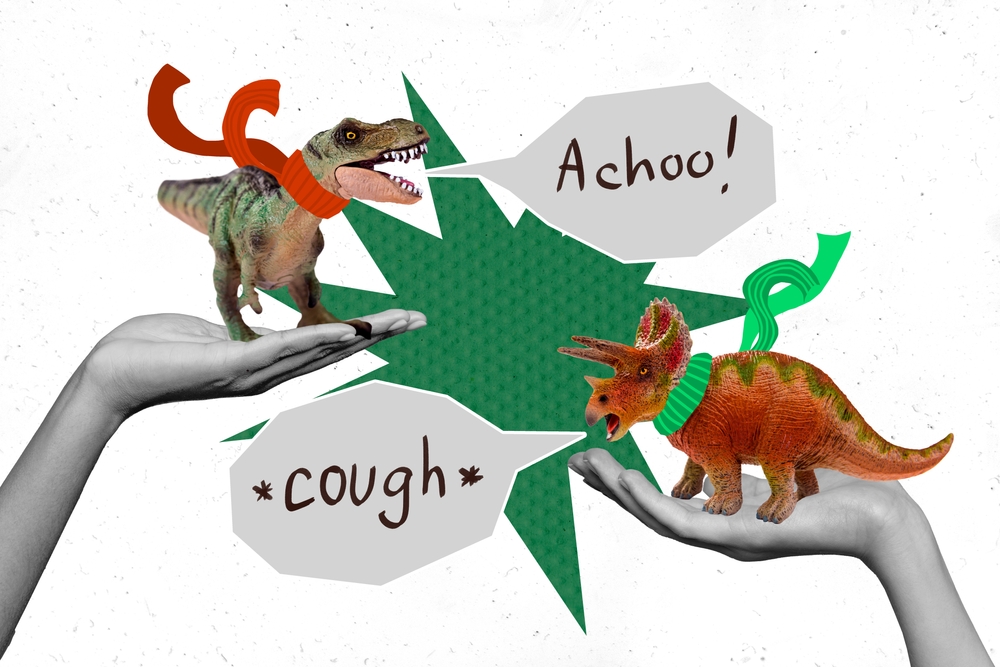
Dinosaurs lived relatively long lives. The oldest T-Rex the specimens we found were alive for about 30 years. Many dinosaurs, especially sauropods, probably lived much longer than that. And with long life and aging comes disease. But what do we know and what can we know about the diseases that affected our favorite dinosaur species?
According to Penelope Cruzado-Caballeroassistant professor of paleontology at the University of La Laguna in Spain, dinosaurs lived with a diverse range of diseases, and we know this by studying the signs of disease left in the fossils, “In most cases, we can only know about diseases that attacked [fossilized] bones,” says Cruzado-Caballero.
What diseases can we see in fossils?
We don’t know much about dinosaur diseases because they had to be significant enough to affect the bones. Also, the dinosaur had to live long enough to be affected by the disease. It’s important to note that much of the fossil record is made up of teenage dinosaurs, not adults, and many were too young to have suffered from disease.
Read more: Dinosaur “mummies” do exist, and here’s how they’re made
“We rely on the fact that the disease has left traces in the bones and that they have fossilized.” And the fact that a bone fossilized and survived to this day is [already] something very extraordinary,” says Cruzado-Caballero.
However, in some rare cases we can also detect diseases that attack the skin by looking at the skin impressions that are fossilized. In a 2015 article published in Journal of Paleopathology, we can see impressions from the skin of Gryposaurus, which has fossilized and can therefore be observed 75 million years later. In it, we can see lesions on the surface of the skin, which are probably similar to dermatitis.
What diseases affected dinosaurs?
The fossil record is fragmented, so it’s hard to say which diseases were most prevalent and in which species, Cruzado-Caballero says. “[W]hat we see right now [in the fossil record] is the result of multiple factors that reduce the amount of bone that reaches us,” she says.
But we know some of the diseases that existed. Dinosaurs got bone infections just like we do today. For example, a bone chamber may appear full of petrified pus, or there may be a space inside the bone that has been engulfed by an infection that has run its course. (Although you wouldn’t be able to tell what kind of infection it is.) Also, spondyloarthropathies (a type of arthritis), cancer, dermatitis, osteochondrosis (abnormal bone growth) and others were present during the age of the dinosaurs.
According to Matthew Carrano, curator of Dinosauria at the Smithsonian National Museum of Natural History, also has some examples of dinosaurs with gout. In this case, the dinosaur probably did not die of gout, but died of it, which is not a fatal disease.
(Credit: Karina Kowalska/Shutterstock)
Could dinosaur diseases be extinct?
It’s not entirely clear how similar the diseases we have today are to those that existed 66 million years ago, Carano says. “We should not discount the possibility that there are many pathogens [that existed back then] which today are long gone,” he says.
Carrano argues that we also tend as researchers to diagnose superdinosaurs with human diseases because we know so much about them. On the other hand, we know very little about diseases in crocodiles and birds, which are the species much more closely related to these ancient animals.
Disease probably affected dinosaurs much more than we can tell from the fossil record. But the more specimens we find, the more diseases we can uncover, providing a window into how dinosaurs lived and ultimately died.
Read more: This is what dinosaurs really looked like

